Photoshop Basics -
Getting to Know the Photoshop Interface

Photoshop Basics
Getting to Know the Photoshop Interface


/en/photoshopbasics/photoshop-alternatives/content/
You can use Photoshop for almost any type of image editing, from touching up photos to creating high-quality graphics. In this lesson, we'll introduce you to the Photoshop interface, including how to open files, work with panels, customize the workspace, and change the display size.
Photoshop is a complex application, and it can feel a bit intimidating to use at first. Because of this, we recommend following along with the lesson by downloading our example file (right-click the link to save it). The more hands-on experience you have with Photoshop, the easier it will be to use.
We'll be using Photoshop CC throughout this tutorial to show you Photoshop's features. If you're using an older version of Photoshop—like Photoshop CS6 or earlier—some features may work a bit differently, but you should still be able to follow along. However, if you're using Photoshop Elements, it's important to note that some of the features covered may be missing or work in a different way.
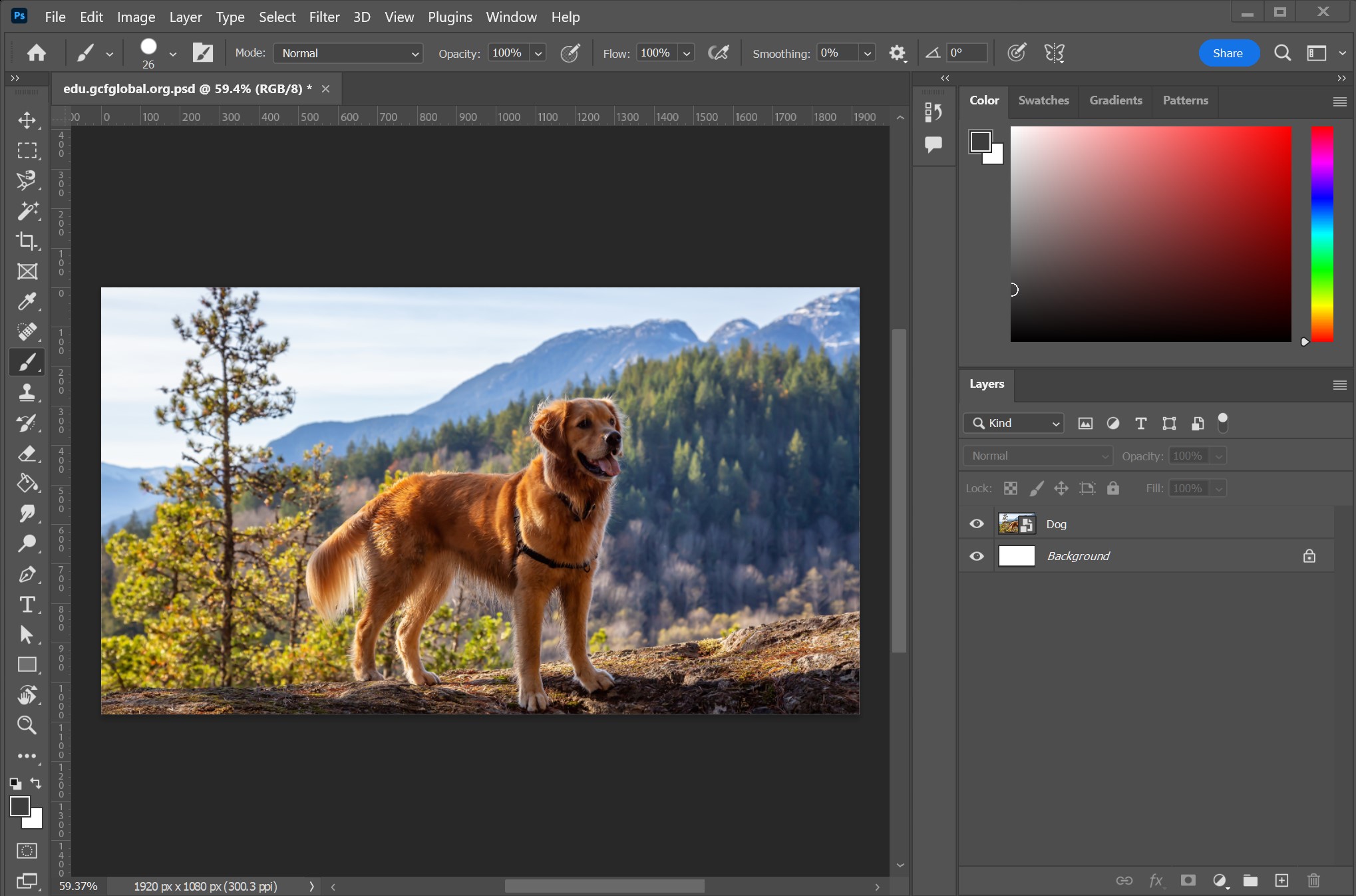
Most of the time, you'll want to start by opening an existing photo rather than creating a new blank image. Photoshop allows you to open and edit existing image files, including JPEG, PNG, and PSD (Photoshop document) files.
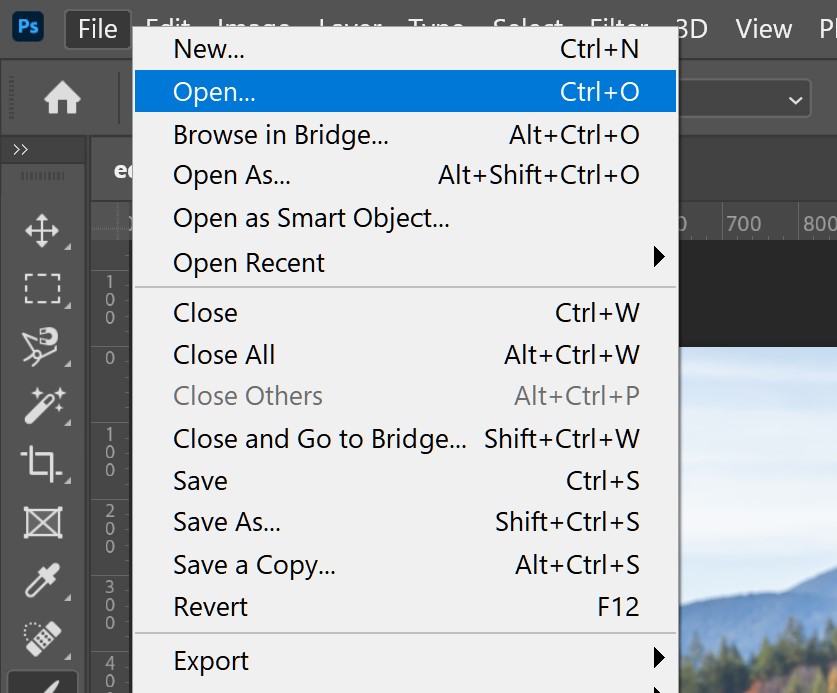
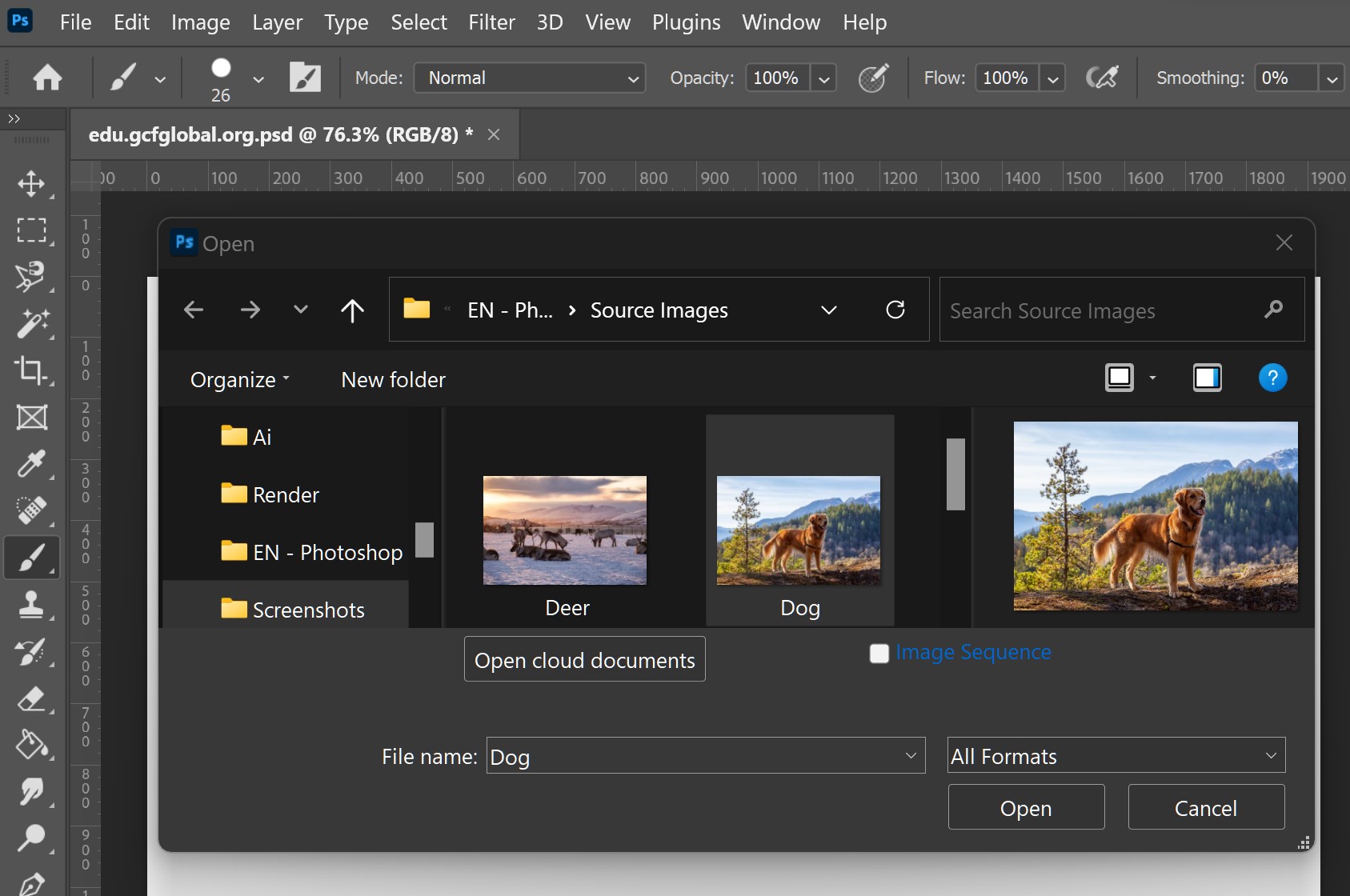
If you don't currently have Photoshop open, you can locate and right-click the file on your computer and choose Open With > Adobe Photoshop to open the file.
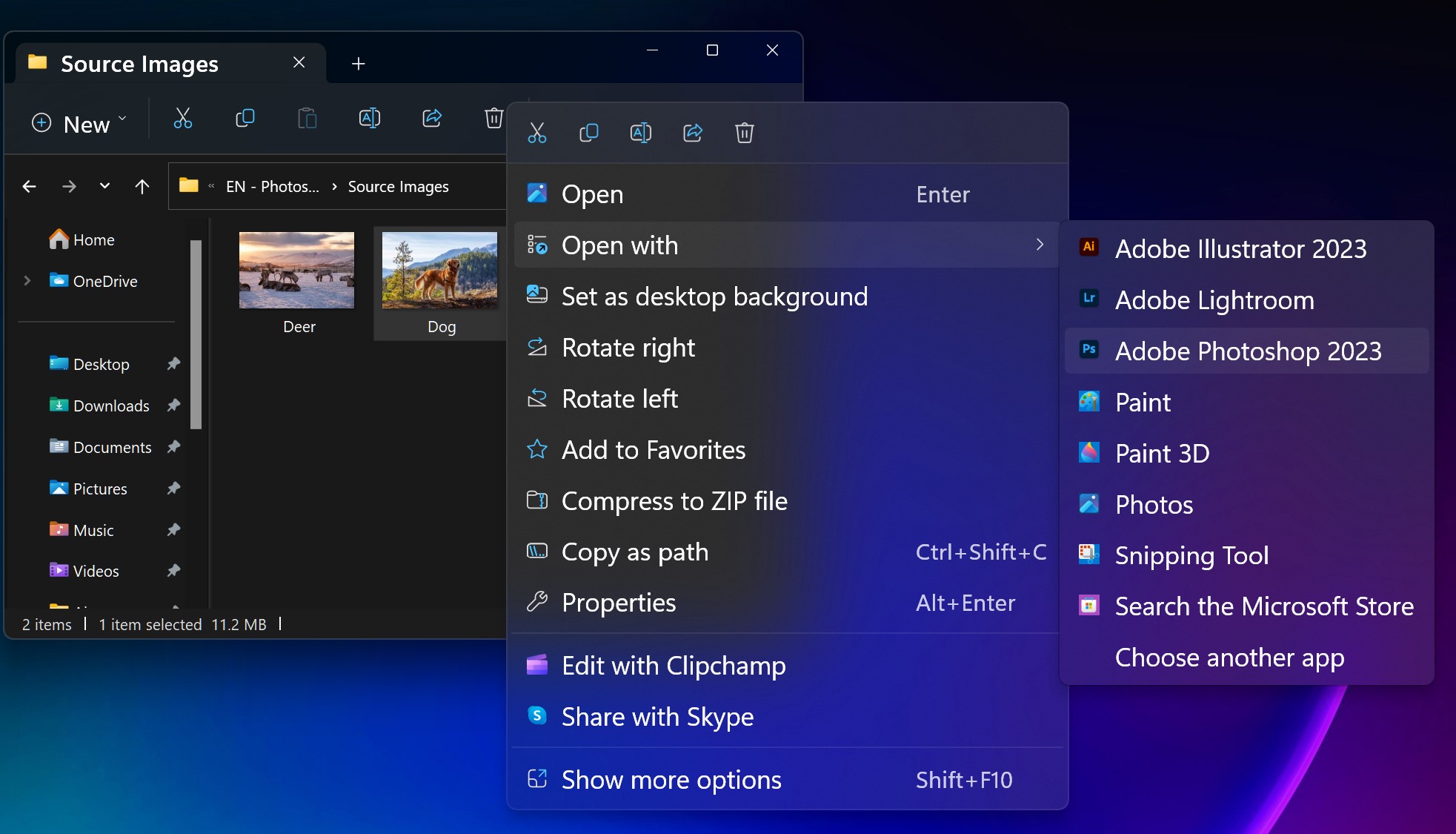
Because Photoshop is designed primarily for professional use, the interface may feel a bit complex and intimidating for new users. Even if you have some experience with other image editing software, it's a good idea to become familiar with its main elements.
Click the buttons in the interactive below to become more familiar with the Photoshop interface.
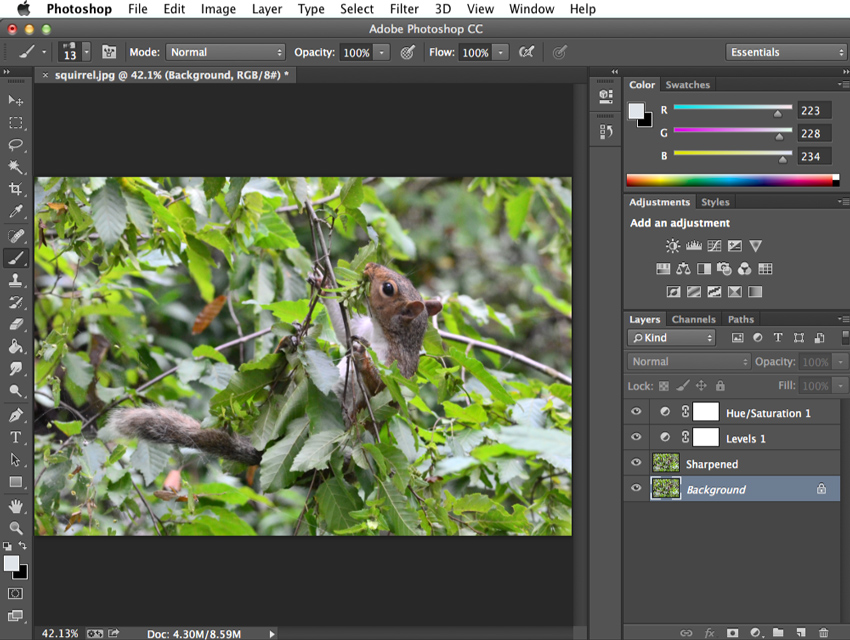
The Tools panel, where you'll select different tools for editing images, is one of the most important features in Photoshop. Once you've chosen a tool, you'll be able to use it with the current file. Your cursor will change to reflect the currently selected tool.
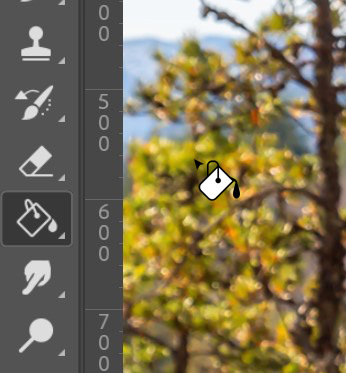
You can also click and hold to select a different tool. For example, you can click and hold the Rectangle tool to select different Shape tools, like the Ellipse Tool, Line Tool, and Custom Shape Tool.
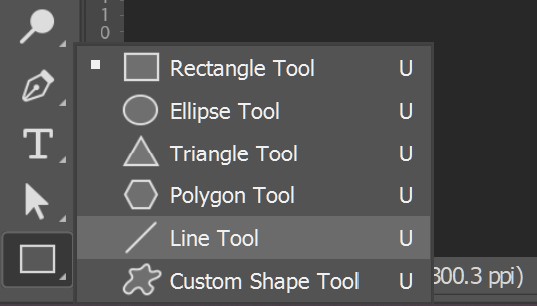
You'll also be able to view and modify information on the current file through the other panels in the workspace. For example, you can view the document's layers in the Layers panel. To show or hide any panel, click the Window menu, then select the desired panel (currently visible panels are indicated by a check mark). In the image below, we're using the Window menu to turn on the History panel.
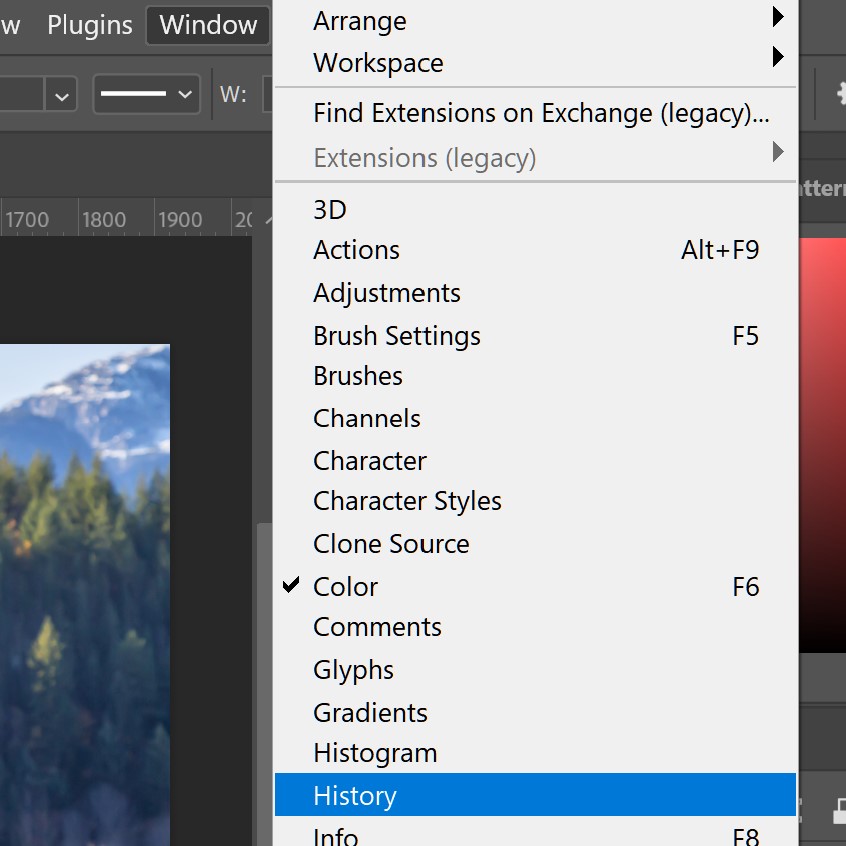
You can use the double arrows to expand or collapse panels. This can be helpful if you want to temporarily hide a panel without removing it from the workspace.You can also press the Tab key on your keyboard to show or hide all active panels.
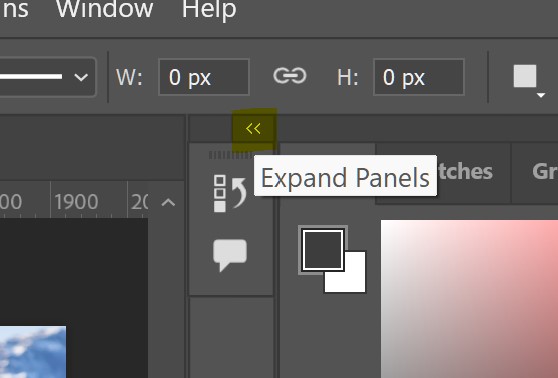
If you want to change a panel's location, you can move it by clicking and dragging the panel to a new part of the workspace.
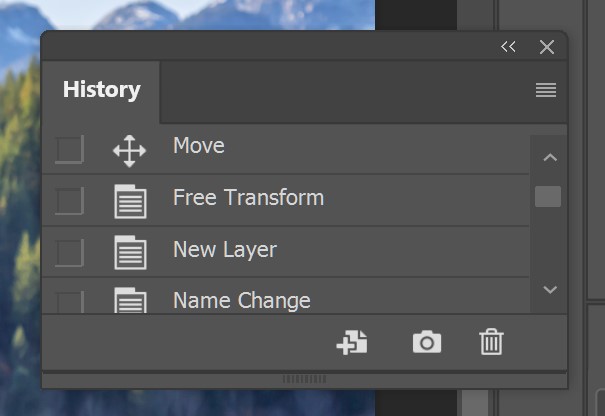
However, if you're planning to follow along with our tutorial, we recommend keeping most panels in the default location for now. To reset the panels to their default positions, select Window > Workspace > Reset Essentials. Note that this process may vary depending on which version of Photoshop you're using. For example, in Photoshop Elements you'll select Window > Reset Panels.
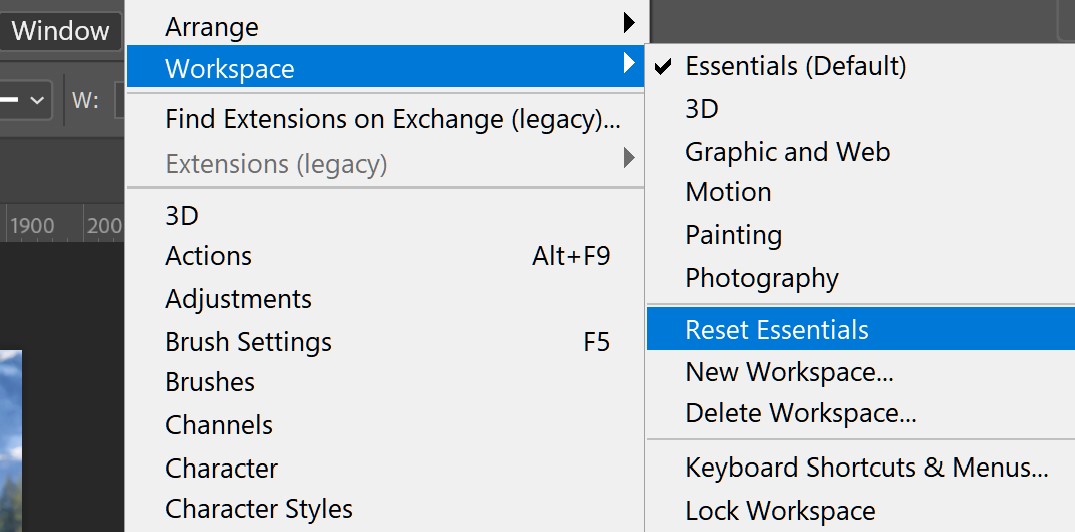
For even more information about organizing panels, you can review this Adobe tutorial.
If you want to customize Photoshop, you can adjust the default application settings. Most of these options are pretty technical, but we'd like to show you two basic adjustments you may find helpful.
Let's go over how to adjust the default unit. By default, a document's dimensions are measured in inches. If you're not primarily editing images for print, we recommend changing this setting to pixels.
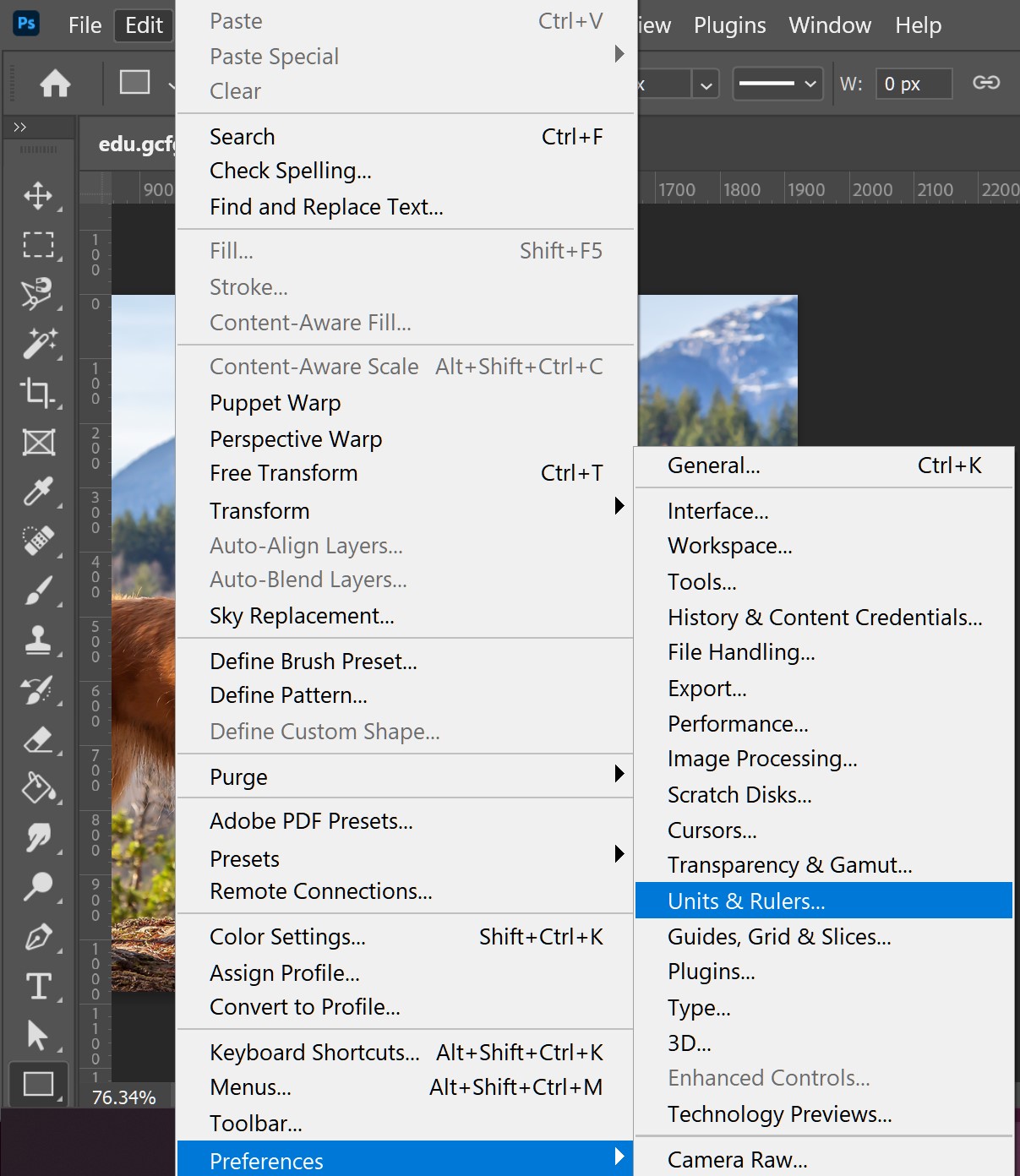
Next up, let's talk about adjusting the text size. If you'd like the text of the Photoshop interface to be larger or smaller, you can adjust the application's text size.
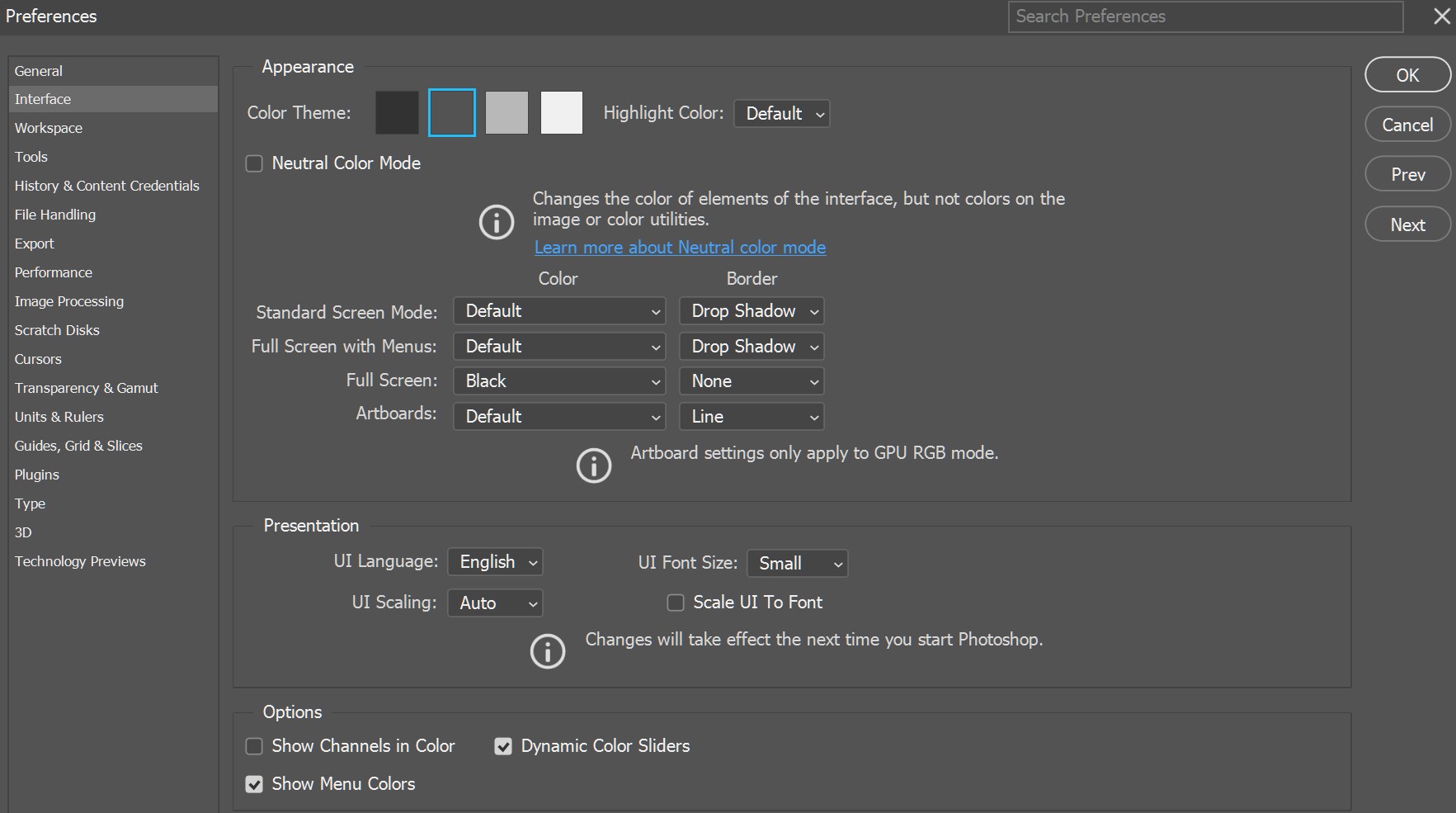
When you're editing an image in Photoshop, you'll often be viewing it at less than 100% of its full size. This is because most modern digital cameras take large, high-resolution photos. These images are so large, in fact, that most computer screens can't display all of the pixels in the image at once. This is actually a good thing because it means you'll have extra detail to work with as you edit the image.
If you want to zoom in or out, simply press Ctrl+ or Ctrl- (hold the Ctrl key, then press the + or - key). If you're using a Mac, press Command+ or Command-.
In the example below, you can see a document at 44.4% of its full size. Notice that you can see the current zoom level at the top of the document window, as well as in the bottom-left corner of the screen.
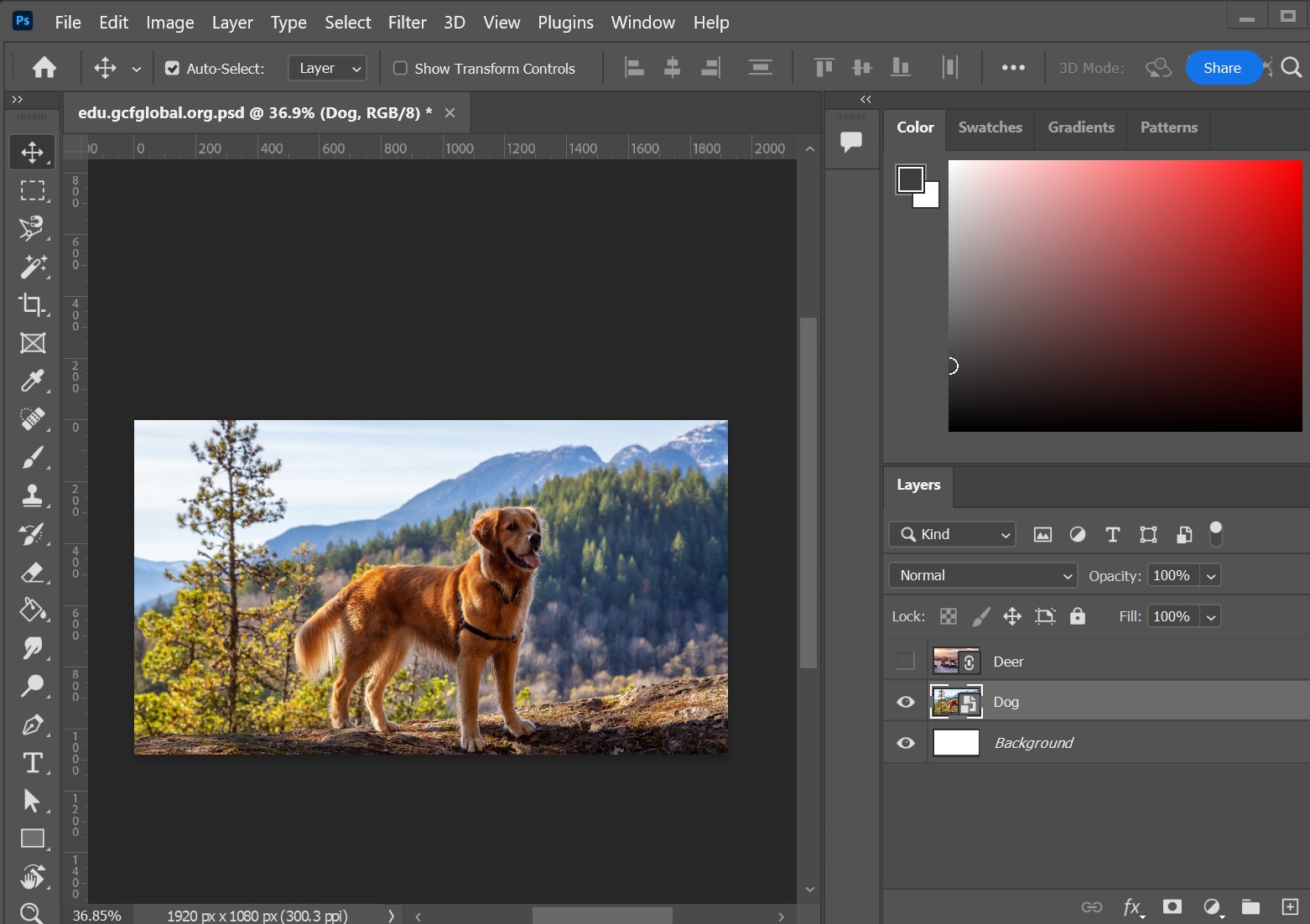
By contrast, the example below shows the same image at 100% (full size). Notice that only part of the image is visible at this zoom level. If you want, you can use the horizontal and vertical scroll bars to view other parts of the image.

To zoom the image to fit the document window, press Ctrl+0 (hold the Ctrl key, then press the zero key). If you're using a Mac, press Command+0.
Depending on your computer's graphics card, some zoom levels, like 33.33% and 66.67%, can cause the image to appear pixelated. If this happens, you may want to zoom to 25% or 50% instead.
Use the keyboard shortcuts above to adjust the zoom level of the example file.
Once you've become familiar with the Photoshop interface, you're ready to start editing images. We'll talk more about some of the most basic adjustments you can make—like cropping, resizing, and rotating—in the next lesson.
/en/photoshopbasics/basic-tasks-in-photoshop/content/